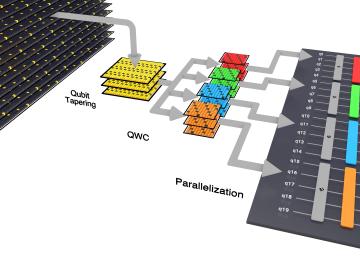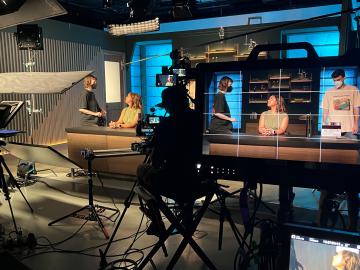
Filter News
Area of Research
- (-) Isotopes (15)
- (-) Supercomputing (73)
- Advanced Manufacturing (1)
- Biological Systems (1)
- Biology and Environment (56)
- Building Technologies (1)
- Clean Energy (63)
- Computational Engineering (1)
- Computer Science (2)
- Electricity and Smart Grid (1)
- Energy Sciences (1)
- Fuel Cycle Science and Technology (1)
- Fusion and Fission (19)
- Fusion Energy (3)
- Isotope Development and Production (1)
- Materials (76)
- Materials Characterization (2)
- Materials Under Extremes (1)
- National Security (26)
- Neutron Science (32)
- Nuclear Science and Technology (2)
News Topics
- Artificial Intelligence (14)
- Big Data (3)
- Bioenergy (2)
- Biology (4)
- Biomedical (3)
- Biotechnology (2)
- Chemical Sciences (1)
- Climate Change (10)
- Computer Science (11)
- Coronavirus (1)
- Critical Materials (1)
- Cybersecurity (1)
- Decarbonization (2)
- Energy Storage (1)
- Environment (6)
- Exascale Computing (12)
- Frontier (15)
- High-Performance Computing (18)
- Irradiation (1)
- Isotopes (8)
- Machine Learning (4)
- Materials (7)
- Microscopy (1)
- Nanotechnology (2)
- National Security (3)
- Net Zero (1)
- Neutron Science (1)
- Nuclear Energy (2)
- Physics (1)
- Quantum Computing (7)
- Quantum Science (4)
- Security (1)
- Simulation (9)
- Software (1)
- Space Exploration (1)
- Summit (6)
- Sustainable Energy (1)
- Transportation (1)
Media Contacts

A new nanoscience study led by a researcher at ORNL takes a big-picture look at how scientists study materials at the smallest scales.

Autonomous labs are changing the nature of scientific investigation. Instead of humans manually orchestrating every part of an experiment, programmed equipment can carry out necessary functions. This workflow accelerates the pace of discovery by reducing the number of monotonous tasks that researchers must perform.

It was reading about current nuclear discoveries in textbooks that first made Ken Engle want to work at a national lab. It was seeing the real-world impact of the isotopes produced at ORNL

Eric Myers of ORNL has been named a senior member of the Institute of Electrical and Electronics Engineers, effective June 21.

Hosted by the Quantum Computing Institute and the Oak Ridge Leadership Computing Facility, the fourth annual event brought together over 100 attendees to discuss the latest developments in quantum computing and to learn about results from projects supported by the OLCF’s Quantum Computing User Program.

ORNL hosted its fourth Artificial Intelligence for Robust Engineering and Science, or AIRES, workshop from April 18-20. Over 100 attendees from government, academia and industry convened to identify research challenges and investment areas, carving the future of the discipline.

Quantum computing sits on the cutting edge of scientific discovery. Given its novelty, the next generation of researchers will contribute significantly to the advancement of the field. However, this new crop of scientists must first be cultivated.

Using the full capabilities of the Quantinuum H1-1 quantum computer, researchers from ORNL not only demonstrated best practices for scientific computing on current quantum systems but also produced an intriguing scientific result.

Wildfires have shaped the environment for millennia, but they are increasing in frequency, range and intensity in response to a hotter climate. The phenomenon is being incorporated into high-resolution simulations of the Earth’s climate by scientists at the Department of Energy’s Oak Ridge National Laboratory, with a mission to better understand and predict environmental change.

ORNL nuclear chemist Clarice Phelps has long worked to educate the next generation of STEM scientists. A new endeavor will let her reach students entering college who need extra help mastering the basics they need to pursue careers in science.


